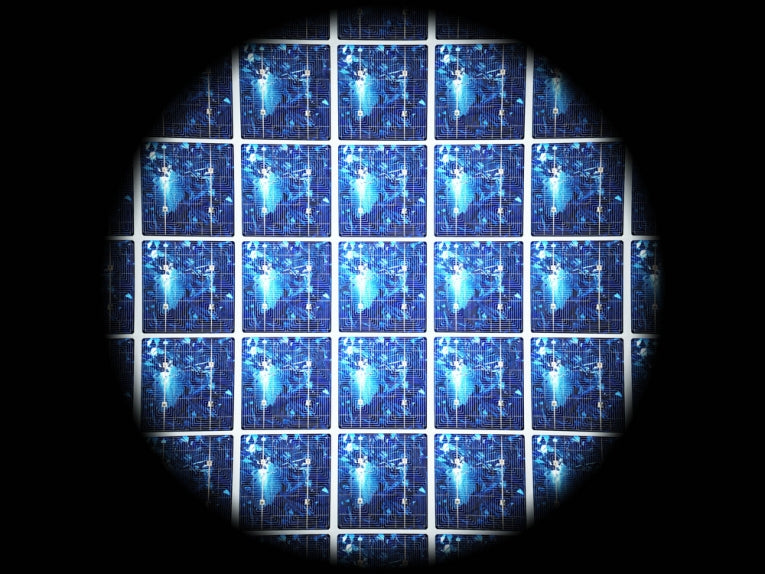Two top global solar manufacturers have teamed up with an Australian university to increase the efficiency of silicon solar cells. Suntech Power and Hanwha Solar have worked on a project by the University of New South Wales (UNSW) to develop an advanced processing technology.
It is the first time that UNSW's School of Photovoltaics and Renewable Energy Engineering (SPREE) and the two rival companies that agreed to collaborate on the research.
They are investigation how miniature metal contact regions can be "self-patterned" into the electric insulator on a solar cell between the silicon wafer and aluminium back-plate.
SPREE senior lecturer Dr Alison Lennon says, "Currently closely-spaced small-area metal contact regions in an insulating layer can only be formed by deliberately patterning the holes with a laser scanning over the surface, which is quite slow.
"Other methods, such as aerosol and ink-jet printing, have been explored, however currently these methods are currently too slow and have not been able to demonstrate the required patterning reliability."
Borrowing techniques used in the metals processing industry, Dr Lennon and her PhD students are examining a radical way to automate and speed up the patterning through aluminium anodisation, which uses a chemical coating on a metal surface to prevent corrosion.
She says, "When you anodise aluminium you can create a porous insulating layer. This means we can effectively turn an aluminium layer on a silicon solar cell into a dielectric layer with lots of little holes, which is exactly what we want."
The UNSW team has managed to make prototypes of cells using this technique. It is now seeking to discover how the metal contacts form so they can boost cell efficiencies, and refine the technique so it can be used on an industrial scale.
"We need to make the process robust, with predictable high efficiencies for manufacturers, and we need to make it cost-effective," Dr Lennon adds.
Dr Lennon, who helped bring together the team, says it illustrates how two companies can achieve more as partners than rivals, and that their support could help bring about quicker commercialisation.
Dr Paul Basore and Dr Renate Egan, Advanced R&D Directors for Hanwha Solar and Suntech Power, respectively, say, "Both Hanwha and Suntech operate high-volume solar manufacturing plants, and both are within the top ten silicon solar cell manufacturers in the world. So if we can demonstrate the viability of this technology, we are both in a position to move the technology into manufacture relatively quickly."










